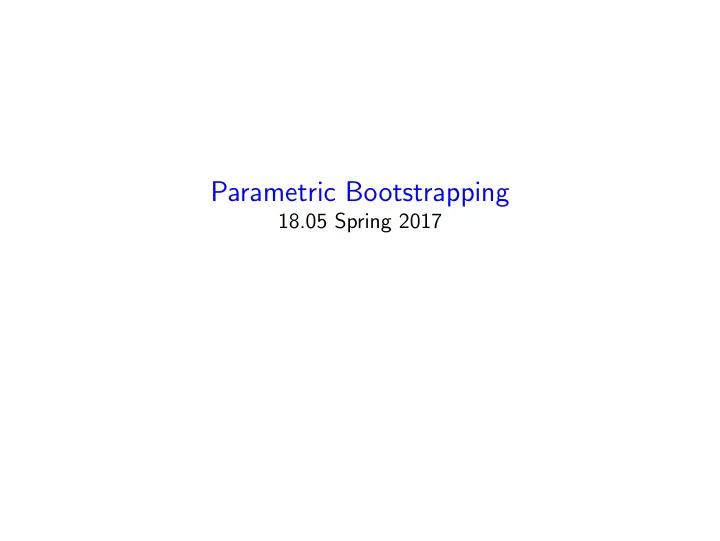

Parametric Bootstrapping 18.05 Spring 2017
Parametric bootstrapping Use the estimated parameter to estimate the variation of estimates of the parameter! Data: x 1 , . . . , x n drawn from a parametric distribution F ( θ ). Estimate θ by a statistic ˆ θ . Generate many bootstrap samples from F (ˆ θ ) . Compute the statistic θ ∗ for each bootstrap sample. Compute the bootstrap difference δ ∗ = θ ∗ − ˆ θ. Use the quantiles of δ ∗ to approximate quantiles of δ = ˆ θ − θ Set a confidence interval [ˆ 1 − α/ 2 , ˆ θ − δ ∗ θ − δ ∗ α/ 2 ] May 4, 2017 2 / 5
Parametric sampling in R # Data from binomial(15, θ ) for an unknown θ x = c(3, 5, 7, 9, 11, 13) binomSize = 15 # known size of binomial n = length(x) # sample size thetahat = mean(x)/binomSize # MLE for θ nboot = 5000 # number of bootstrap samples to use # nboot parametric samples of size n; organize in a matrix tmpdata = rbinom(n*nboot, binomSize, thetahat) bootstrapsample = matrix(tmpdata, nrow=n, ncol=nboot) # Compute bootstrap means thetahat* and differences delta* thetahatstar = colMeans(bootstrapsample)/binomSize deltastar = thetahatstar - thetahat # Find quantiles and make the bootstrap confidence interval d = quantile(deltastar, c(.1,.9)) ci = thetahat - c(d[2], d[1]) May 4, 2017 3 / 5
Board question Data: 6 5 5 5 7 4 ∼ binomial(8, θ ) 1. Estimate θ . 2. Write out the R code to generate data of 100 parametric bootstrap samples and compute an 80% confidence interval for θ . (Try this without looking at your notes. We’ll show the previous slide at the end) May 4, 2017 4 / 5
Preview of linear regression Fit lines or polynomials to bivariate data Model: y = f ( x ) + E f ( x ) function, E random error. Example: y = ax + b + E Example: y = ax 2 + bx + c + E Example: y = e ax + b + E (Compute with ln( y ) = ax + b + E .) May 4, 2017 5 / 5
Recommend
More recommend